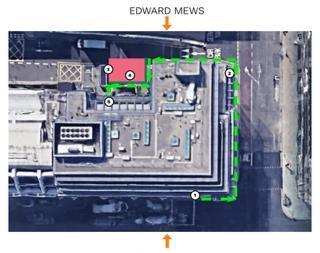It’ll be different this time. No, I’m not being ironic. The way this housing cycle unwinds is likely to be very different to the last two – despite the headlines.

Rising interest rates and inflation are already prompting a surge in the word ‘crash’ across the broadsheets. I’ve worked through a couple, starting in the late 1980s and early noughties, and not only were they both very different from each other but conditions were radically different from today’s. Here are a few key differences:
1. We haven’t had (much of) a speculative bubble
Prices have definitely risen, up 81% since the post-financial-crisis low point in 2009, according to Nationwide. That compares to 229% and 267% trough to peak in the previous cycles, peaking in 1989 and 2007 respectively. In the 1980s, there was Margaret Thatcher’s explosion in home ownership. In the noughties, prices were inflated by the more speculative manifestations of the buy-to-let boom, now undermined by tax changes.
2. Rates are still near historical lows
It’s easy to forget amid the lurid reporting that the Bank of England Official Rate is a mere 1.25% and not the 13.8% and 5.8% in the last two peaks.
3. The cost-of-living crisis hasn’t been shared equally
I made this point in my last column. A sad but undeniable truth is that, in the main, the rising cost of living is a crisis for the worst off, who had least chance of getting on the housing ladder.
4. Minimal unemployment
A key brake on the market has traditionally been not so much absolute levels of unemployment, but the fear of it worsening. The latest rate is a very tight 3.8% but, again, many of those who have done best from hybrid working are in management and sectors most likely to weather cost-cutting.
5. Banks are better capitalised and regulated
The global financial crisis, itself largely brought about by reckless property lending, triggered an almost instantaneous contraction in mortgage offers. This in turn led to a worldwide imposition of capital requirements on banks. According to Zoopla, fewer than 5% of mortgages now have a loan-to-value higher than 90%, compared with more than 15% in 2007.
6. No crazy (or downright dodgy) lending
A reflection of this stiffer regulation is that the more exotic mortgage loans are now largely extinct. Gone are the self-certified, interest-only loans that were predicated largely on profiting from capital gains, via ‘flipping’ of mainly new-build flats rather than securing a dependable rental income. They spawned an explosion in suspect ‘make yourself a millionaire’ schemes; I suggested at the time ‘lie-to-bet’ was a more appropriate term.
7. Buy-to-let is a shadow of the past
The erosion of tax relief on mortgage interest for buy-to-let investors, phased over four years since 2017, led to a quiet exodus of private landlords selling into the owner-occupier market. More than 300,000 homes have left the private rental sector, taking much of the froth out of the market and now steadily being replaced by build to rent.
8. Very few forced sellers
Prices don’t generally ‘crash’ unless owners are forced out of their homes. Repossessions were a factor in the 1990s, but were scarce post financial crisis. The government will no doubt be leaning on any lenders to avoid them kicking bona-fide owner-occupiers out of their homes.
9. People still want to buy
Most of the 25% increase in prices post-pandemic has been driven from outside the South East, driven more by aspiration among the regions Boris Johnson needs to keep his tenuous grip on power (at least he did as Property Week went to press).
10. No external shocks (so far)
An aspect that much of the commentariat overlook is that the last two crashes were not caused by rising interest rates but by very specific non-monetary events: Nigel Lawson’s disastrous ending of double mortgage relief in 1988, after stoking up an overheated market during his six-month run-in; and the aforementioned lending hiatus following the financial crisis.
In the absence of a similarly catastrophic shock, a more boring scenario looks likely to unfold over the next year or so than Fleet
Street pundits are hoping for: a gentle unwinding of asking prices; buyers and sellers sitting on hands; and fewer transactions. What else could possibly go wrong? Err, World War Three….
Alastair Stewart is an equities analyst and consultant






























No comments yet